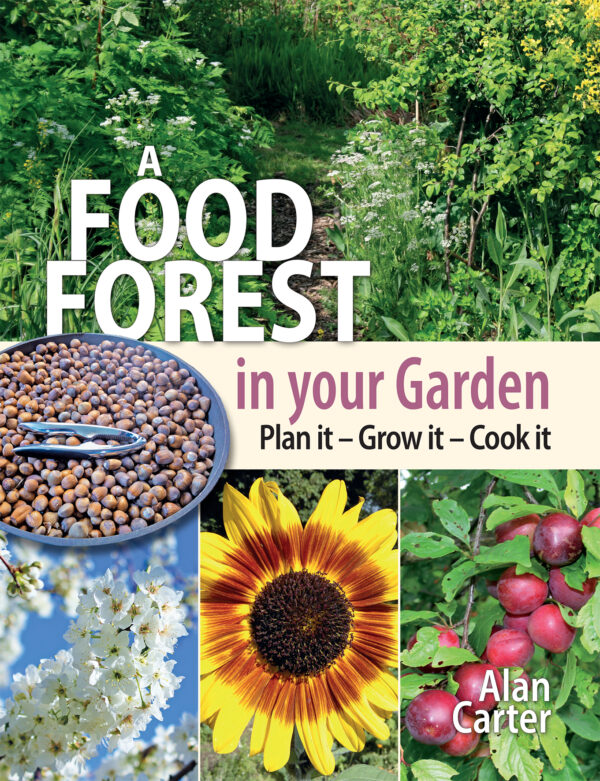 Summary
Summary
Grow your own seasonal food in a low maintenance, nature friendly garden that feels like a woodland glade. Alan Carter shows you how to plan and plant a temperate forest garden for any sized plot, from small terrace or allotment to smallholding.
Learn how to successfully layer root crops, fruit, perennial vegetables and edible shrubs below tree crops, cultivating an edible garden that doesn’t look like a traditional vegetable plot. A forest garden is wildlife friendly, provides nutrient-dense and often unusual food through every season and requires minimal work to maintain.
The first part of this in-depth practical guide explains how a forest garden works, how to map your own climate and design your own plot, and how to manage it with pruning, mulching and weeding. What’s not to like about Alan’s motto of ‘the more you pick, the more you get’, and intriguing concepts such as the Panda Principle?
The second half of the book is a detailed directory of more than 170 plants and fungi suitable for a wide range of temperate climates, complete with growing, harvesting and cooking tips based on over a decade of Alan’s own experience. Learn how to incorporate traditional fruit and vegetable crops, such as beans and strawberries, into your forest garden, and how to weave in more unusual crops, such as shiitake mushrooms and ferns.
Techniques from agro-ecology bring regenerative farming into the backyard, helping you to work towards greater self sufficiency. Useful tips on seed saving and propagation help keep plant costs low and there is practical advice on soil health, compost – essential for all no dig, organic gardeners – and pests and disease.
Written by Scottish plant expert Alan Carter, A Food Forest in your Garden will help you create your own productive forest gardens even in cooler climates.
Where to get it?
Permanent Publications
Amazon
Chelsea Green
Food Forest Garden
Apple books
Related Videos
Related Threads
Forest Garden Forum
Perennial Vegetables Forum
Related Websites
Alan Carter's Webpages









